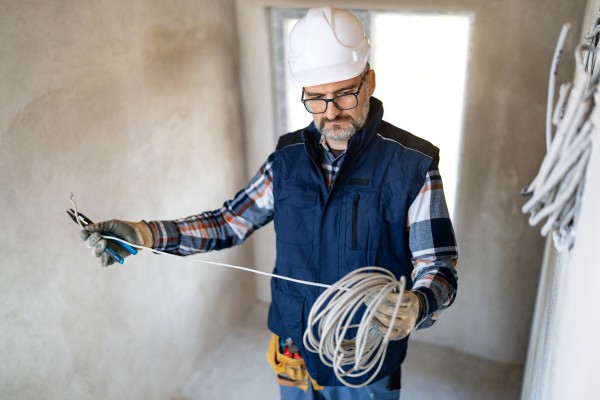Cable waste no more: Turning leftovers into a win for the industry
Cablers across the country are often left with a familiar problem: What do you do with the last few metres on a cable reel? Sandy Mennie explores an answer to the waste problem.
Most construction cables are supplied in 100m drum lengths, a practical standard that’s manageable onsite and helps avoid manual handling injuries. But after a few runs, there’s often a short length left.
ADVERTISEMENT
It’s too valuable to discard, yet too short for the next job. The usual options are to scrap it or store it indefinitely, hoping it’ll be useful someday.
When you multiply this across thousands of sites, the scale of waste becomes clear, and it goes beyond just the cable.
A growing waste problem
The Australian Cable Initiative (ACI) estimates that plastic cable drums alone generate around 3,300 tonnes of waste annually. That’s enough to fill 80 Olympic swimming pools. Add to that the leftover cable, and the environmental impact grows.
Worse still, traditional recycling practices aren’t keeping up. While about 50% of cable materials (mostly metals) are recovered, only 2–5% of the PVC insulation and sheath are effectively recycled.
That’s a huge, missed opportunity — both environmentally and economically.
Legislation in Victoria and New South Wales has recently tightened around scrap collection. Under new rules, “cash for scrap” transactions (once common and often untraceable) are now banned. Payments must be made via EFT or non-transferable cheques, making informal scrap disposal less attractive.
All of this points to a clear need for a better system.
A smarter solution
In response, several ACI members in Victoria have come together to trial a circular, collaborative recycling initiative, known as Recycable. The pilot includes electrical wholesalers and a forward-thinking recycling partner.
Here’s how it works:
Step 1: Contractors return spools with unused cable to the wholesaler from whom they purchased it.
Step 2: The wholesaler weighs the residual cable and records the type.
Step 3: The wholesaler provides store credit based on the recoverable value.
Step 4: Once enough returns are collected, they’re picked up by the recycler.
Using cutting-edge recycling technology, the recycler disassembles and processes both the cable and the drum. Materials are carefully separated to avoid cross-contamination, ensuring that everything — from copper to PVC to the reel itself — can be reintroduced into the supply chain.
Real-world benefits
The pilot has already delivered encouraging results.
Material recovery rates have jumped from 50% to over 90%. That’s a game-changer, especially in an industry where sustainability is increasingly under scrutiny.
Contractors benefit by recovering value from leftover cable — no more writing it off as waste. They also receive documentation that supports Waste Management Plans and EPA compliance, which is becoming essential for tenders and government work.
Wholesalers benefit by offering a value-added service that builds loyalty and positions them as sustainability leaders. It’s also a meaningful way to strengthen their Environmental, Social and Governance (ESG) credentials, which are becoming more important to customers, suppliers and investors alike.
And for the recycler, the scheme delivers consistent access to clean, high-quality material streams — a vital component of successful circular economy operations.
Changing the mindset
What’s happening here is more than a recycling initiative. It’s a shift in how the industry views leftover materials — not as waste, but as resources.
Instead of being part of the problem, cable waste can become part of the solution. Through collaboration and smart systems, the industry can recover value, reduce landfill and actively contribute to environmental protection.
The road ahead
With early success in Victoria, there’s momentum to expand the scheme further. The model is scalable and could easily be adopted by more wholesalers and contractors across other states. With broader participation, logistics become easier, costs come down and environmental benefits increase.
So next time you’re loading a reel of cable, think beyond the job at hand. That leftover length — and the drum it came on — could be worth more than you think. Thanks to industry innovation, it’s now possible to recover costs, support sustainability goals and help the environment — all at the same time.
-
ADVERTISEMENT
-
ADVERTISEMENT


